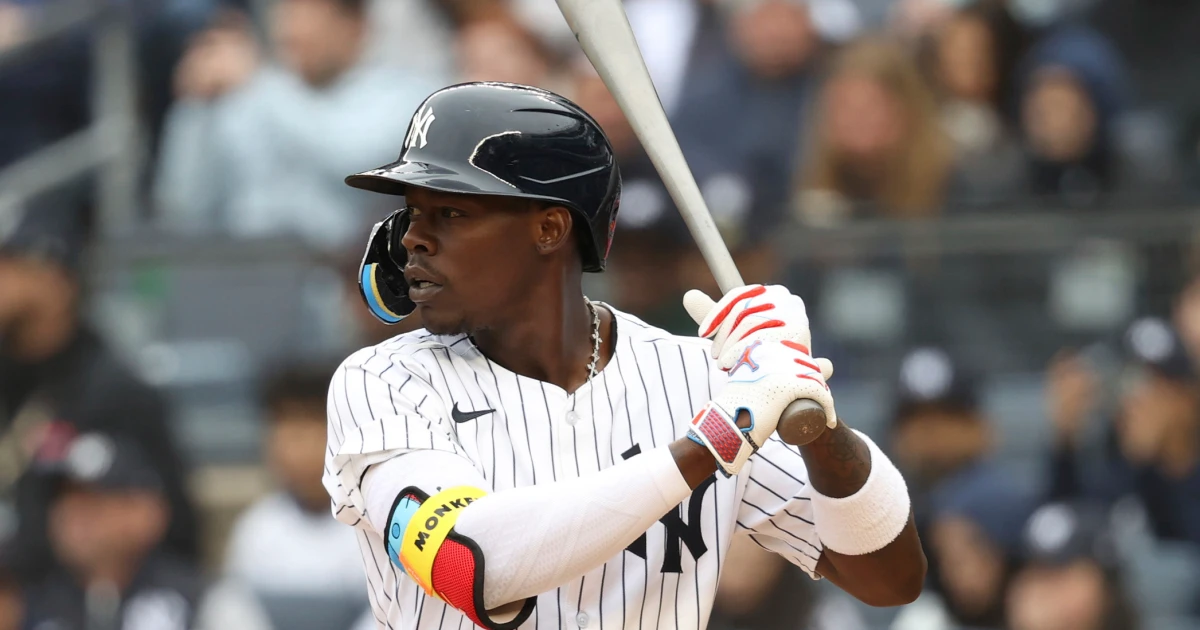“Torpedo” talk filled baseball airwaves on Monday with managers, players and physicists wanting to know more about the long-ball-launching rods that were all the buzz of opening week.
The New York Yankees swept the Milwaukee Brewers to open the 2025 season, but it was the Bronx Bombers’ use of unconventionally shaped bats — and eye-popping 15 home runs — that caught baseball’s attention.
Philadelphia Phillies manager Rob Thomson, a longtime Yankees coach, said he’d never heard of these bats until the middle of last week.
“I wasn’t even sure if it was a thing or not, if it was real. But I guess it is real,” Thomson told reporters ahead of his team’s home opener in Philadelphia on Monday. “So we’re looking into it.”
While the bats looked unusual, they were perfectly legal, the Yankees and MLB said.
While MLB declined comment on the matter, the league said “numerous players on numerous clubs,” including all of the other teams in the Yankees’ American League East, are also using some form of these so-called torpedo bats.
Meets MLB specifications
Bats must be made of solid wood, smooth, round and no more than 2.61 inches in diameter and 42 inches in length, though most are no more than 34 inches long today.
Each bat must be approved by Major League Baseball though they’re all slightly different, as manufacturers and players have gone back and forth about weight distribution for individual batters.
But for the most part, the hitter’s sweet spot of a 34-inch-long bat — where batters hope to connect with maximum acceleration and mass — is several inches down from the end and just above where the manufacturer’s label is marked.
Where these bats seen in Yankee Stadium over the weekend differ is the additional weight at the sweet spot — and just below that traditional zone, going toward a batter’s hands.
A pitcher’s goal, aside from striking out a batter, is to induce weak contact.
That’s often done with a pitch breaking horizontally as a batter swings in belief he’ll connect off the sweet spot before the ball ends up closer to his hands, in contact that’s colloquially called getting “jammed.”
A typical MLB game will feature at least one broken bat — the ultimate result of a “jammed” batter — in what’s probably the second biggest thrill for a pitcher, aside from a strikeout.
So when Yankees researchers found that shortstop Anthony Volpe had a propensity of getting jammed, as YES network play-by-play announcer Michael Kay explained over the weekend, the answer was to turn that weakness into a potential strength by moving more mass down the bat.
‘You’re always looking for the slightest edge’
Former Yankees infielder Kevin Smith, who along with Kay brought the issue to light over the weekend, said torpedo bats are the next natural step in baseball technology.
“You know, in baseball, you’re always looking for the slightest edge,” the retired Smith told NBC News on Monday.
“I mean, pitchers have been doing it forever. You know, there’s been a bunch of of bat technology that has come out that is helping hitters. This is just kind of the next step, but we’ll see.”
That extra bit of mass put in a spot that’d normally result in weak contact off the handle could make all the difference.
“We can put wood in places where you don’t hit the ball, or we can put wood where it matters the most,” Smith said. “And so taking a little bit of wood off the end where you really don’t want to hit the ball at all, and putting it into a spot where you might make more contact and do more damage.”
But Philadelphia second baseman Bryson Stott said the torpedo bat isn’t for everyone and will only benefit hitters who are perpetually being jammed and have thousands of points of data to prove it.
“If you hit it off the end, with that torpedo bat, you’re in trouble,” he told reporters on Monday. “So it’s mostly where you hit it, and where all their computers and things are telling you where you’re hitting it.”
The bats were innovated by MIT-educated physicist Aaron Leanhardt, a former Yankees analyst who was hired as the Miami Marlins’ field coordinator this past winter.
Leanhardt declined comment on Monday as his innovation was the talk of the game.
‘Revolutionary’ or ‘clever innovation’?
David Pritchard, an MIT physics professor and one-time teacher of Leanhard, said his former student was always intellectually curious.
“Baseball is a very traditional game, and if you get up there with a funny looking bat and you strike out, when you go back to the dugout, what’s going to happen? You’re going to get razzed by the other teammates, right?” Pritchard said.
“It just takes some outsiders, like Aaron who has a PhD from MIT and really understands physics and knows what’s going on, to be the sort of guy who drives something under the radar and see if it works.”
Yankees like Volpe, Jazz Chisholm Jr., Cody Bellinger, Paul Goldschmidt and Austin Wells will perhaps have an early upper hand with these new bats.
In the three-game demolition of Milwaukee, those five players were a combined, red-hot 18-for-59 (.305) with nine long balls.
Caltech president, quantum physicist and baseball fan Thomas Rosenbaum expects pitchers to quickly adjust and find new ways to attack that hitter.
“I don’t think it’s revolutionary, but it’s a clever innovation,” Rosenbaum said. “In the short term probably will have larger effects that in the long term would be my prediction.”
Lilia Wood and Tom Llamas contributed.
